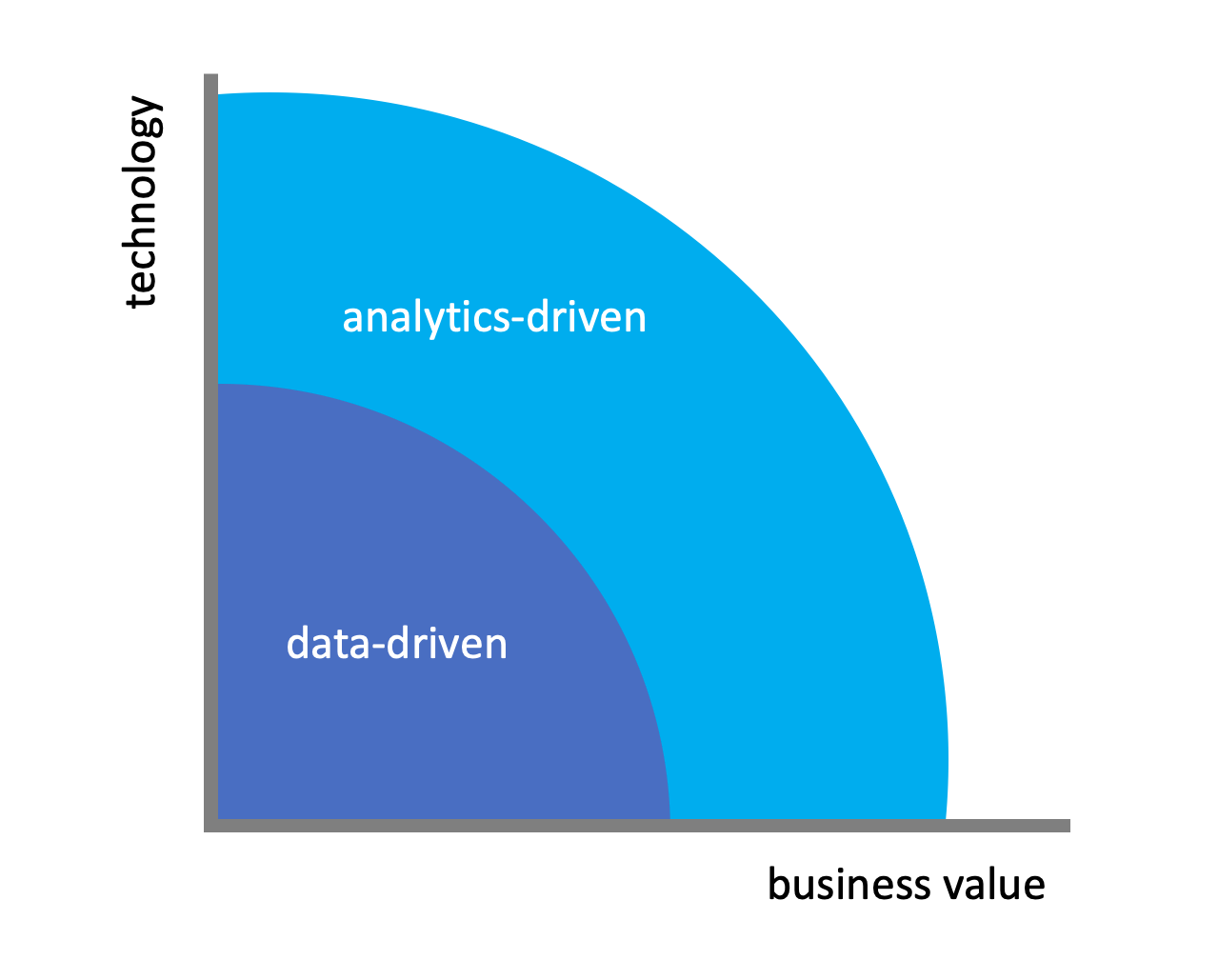This blog is the first of a three-part series where we’ll delve into the concepts of data and analytics, what it takes to be truly analytics-driven and achieve mastery in this field. In this blog, we’ll examine the distinctions between being data-driven and analytics-driven. Moving on, in the second blog we’ll explore the aspirational goals that go beyond analytics-driven and lead to analytics-mastery. Finally, in the last part of the series, we’ll shed light on the vital role of AnalyticsOps and how it contributes to each stage of the analytics evolution.
I often see the terms “data-driven” and “analytics-driven” used interchangeably. As a data professional, it’s important to understand the differences between data-driven and analytics-driven strategies. While similar, they’re distinct concepts, and organizations don’t need to choose one or the other.
Many businesses nowadays proclaim, “We are a data-driven business” or “We make our decisions using data.” But what does it really mean to be data-driven? And is that enough to compete in today’s economy? In this blog, I’ll explore these questions and delve into the benefits and use cases of being data-driven. However, it’s important to note that in order to truly thrive in a modern analytics-driven culture, businesses need to evolve beyond just being data-driven and embrace modern analytics techniques like artificial intelligence and machine learning.
Data-driven: people fetch data that looks only at past facts
Analytics-driven: people obtain answers about what has happened and what could happen next
What does it mean to be data-driven?
Being data-driven in a data analytics context means making informed business decisions from analysis of historical data as opposed to relying solely on intuition, experience, or assumptions. This involves collecting, storing, and analyzing data using data management and analytics tools. By being data-driven, businesses can make more informed decisions, optimize their operations, and improve their bottom line.
For example, an e-commerce business might use data to identify which products have been selling well and which ones haven’t and adjust their inventory and pricing accordingly.
At its core, being data-driven means leveraging the power of data to drive business success. While this concept is not new, it has become increasingly important in today’s digital age where data is more abundant and accessible than ever before. From generating reports to tracking performance metrics, businesses have been using data to inform decision-making for decades.
What does it mean to be analytics-driven?
Being analytics-driven requires advanced analytics techniques embedded in day-to-day analytics to make more accurate, timely decisions.
Analytics-driven goes beyond being simply data-driven with historical data. Using advanced analytics tools and predictive techniques, you can uncover hidden patterns and trends in data that might not be immediately apparent. It also involves using ML and AI models to make predictions about future outcomes, identify opportunities for optimization, mitigate risks, and automate decision-making processes.
For example, using predictive analytics, people can analyze historical data to make predictions about future trends, allowing them to make more accurate forecasts and plan accordingly. Augmented analytics, on the other hand, uses AI and natural language processing (NLP) to automate the process of data analysis, making it easier for non-technical users to gain insights from all types of data.
Analytics-driven decision-making represents the next evolutionary step in leveraging data to drive business success. This evolution has been made possible in part by the advent of cloud computing, which has made powerful computing resources more accessible to businesses of all sizes. Additionally, current analytics platforms now democratize complex techniques like AI and ML as simple as the click of a button, allowing anyone to leverage these sophisticated techniques without relying on data scientists. Overall, being analytics-driven represents a significant advancement to being simply data-driven to drive better business outcomes.

What is the importance of the human element in decision-making?
While analytics-driven decision-making relies on data and analytics tools, the human element remains a crucial component of that process. While analytics can provide valuable insights and guidance, humans still must interpret and contextualize that information, in order to make a final decision. Ultimately, the success of an analytics-driven approach depends on how quickly and well humans can understand, analyze, and act on the insights provided by these tools.
How can organizations become analytics-driven?
The key to evolving from data-driven to analytics-driven is to embrace new analytics techniques from the right cloud native analytics platform and continue to nurture a cultural shift that values fact-based decision-making. Here are some initial steps that can help start that journey:
- Invest in an analytics platform that has embedded AI/ML capabilities. Specialist AI/ML tools exist but they’re both costly and complicated, requiring a data science team to operate them. Analytics platforms like Oracle Analytics Cloud provide AI/ML embedded and expose the capabilities for all users of all skill levels and start for just $162.30 for 10 users per month!
- Focus on ease of use. It’s of no use if the process to apply AI/ML or predictive analytics in day-to-day analytics is onerous or too complex. The key is an analytics platform that makes that combination seamless, enabling anyone to easily apply advanced techniques — once relegated to experts — in their analyses at any moment.
- Identify new business use cases that AI/ML techniques could solve. This could be as simple as predicting inventory levels for the next 6 months for supply chain or automatically generating a natural language narrative that explains your visualization.
- Experiment! If ChatGPT has taught us anything, it’s that AI/ML techniques are cool and interesting. Grab a dataset you’re familiar with and run some AI/ML techniques over it. See if you discover anything new that you might never even have thought to look for.
- Foster a culture of analytics-driven decision making. Reward employees who rely on analytics to guide their decision-making instead of experience, gut feelings, or asking the highest-paid person in the room.
Summary
In today’s digital age, data-driven business decisions are no longer a luxury but the norm, irrespective of how sophisticated the process and data are. However, leaders know it’s no longer enough to simply be data-driven. Advancements in technology and analytics have given rise to the next level of decision-making, known as analytics-driven. But what does that mean for your business? It doesn’t mean sacrificing your data-driven practices but enhancing them.

Instead, evolving to be analytics-driven extends your analytics capability and opens new possibilities for discovering new unseen business opportunities like predicting disruptive events, anticipating new benefits, or proactively mitigating risks. Don’t think of it as an either/or situation, but rather as a transformative approach from data-driven to analytics-driven that will enhance everyone’s decision-making capabilities.
Read part 1 of this 3-part blog series at Analytics-Mastery: The future of analytics and how to achieve it
Read part 2 of this 3-part blog series at What is AnalyticsOps, and how could it improve your business decisions?
Learn more about Oracle Analytics. To stay on top of what’s new, follow us on YouTube and LinkedIn where we’ll make announcements and provide video demos. For the latest news, product updates, events and success stories follow us on Twitter @OracleAnalytics, and connect with us on LinkedIn. Or try Oracle Analytics for yourself in a hands-on workshop.
